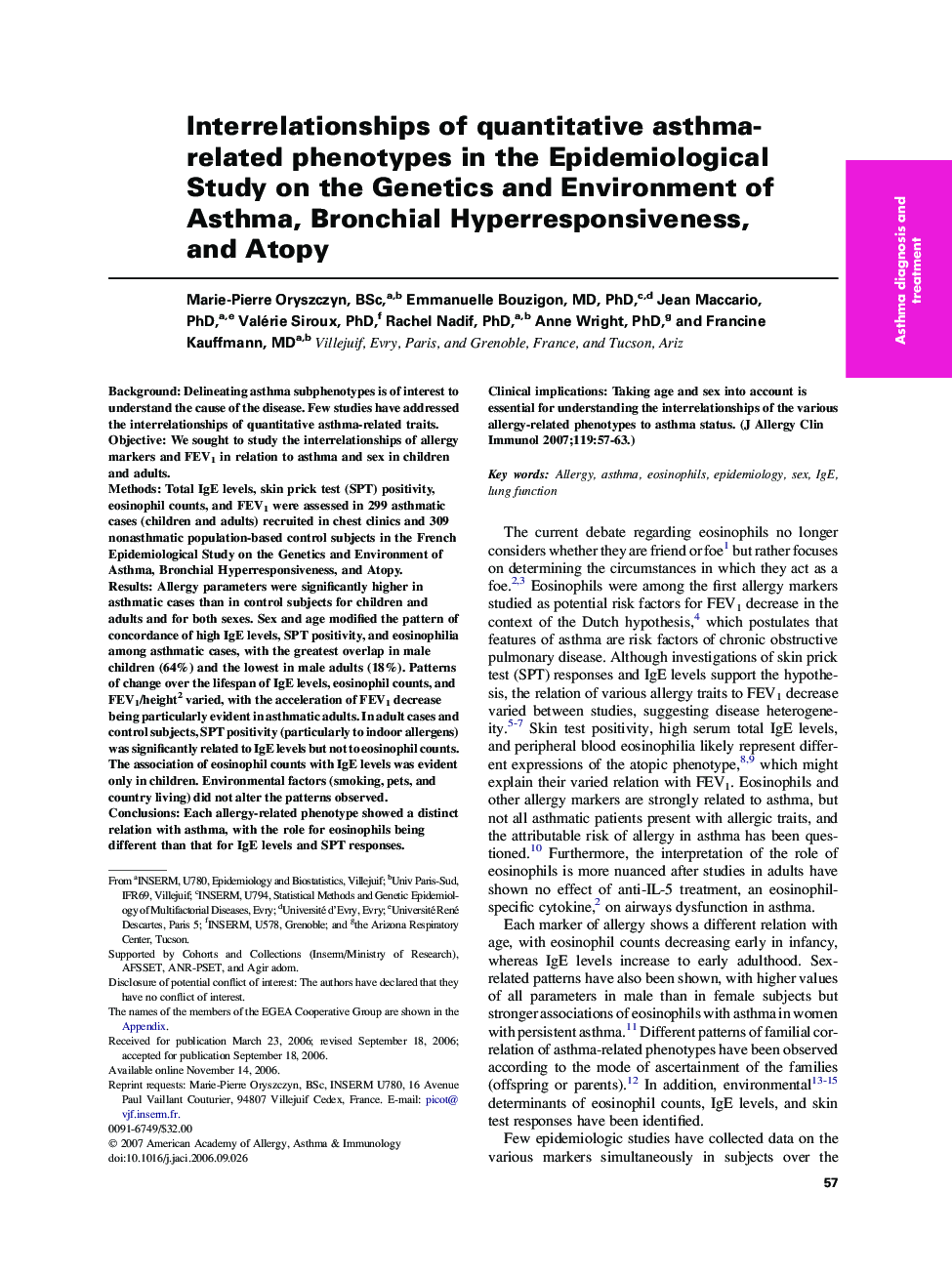| کد مقاله | کد نشریه | سال انتشار | مقاله انگلیسی | نسخه تمام متن |
|---|---|---|---|---|
| 3202371 | 1201971 | 2007 | 7 صفحه PDF | دانلود رایگان |

BackgroundDelineating asthma subphenotypes is of interest to understand the cause of the disease. Few studies have addressed the interrelationships of quantitative asthma-related traits.ObjectiveWe sought to study the interrelationships of allergy markers and FEV1 in relation to asthma and sex in children and adults.MethodsTotal IgE levels, skin prick test (SPT) positivity, eosinophil counts, and FEV1 were assessed in 299 asthmatic cases (children and adults) recruited in chest clinics and 309 nonasthmatic population-based control subjects in the French Epidemiological Study on the Genetics and Environment of Asthma, Bronchial Hyperresponsiveness, and Atopy.ResultsAllergy parameters were significantly higher in asthmatic cases than in control subjects for children and adults and for both sexes. Sex and age modified the pattern of concordance of high IgE levels, SPT positivity, and eosinophilia among asthmatic cases, with the greatest overlap in male children (64%) and the lowest in male adults (18%). Patterns of change over the lifespan of IgE levels, eosinophil counts, and FEV1/height2 varied, with the acceleration of FEV1 decrease being particularly evident in asthmatic adults. In adult cases and control subjects, SPT positivity (particularly to indoor allergens) was significantly related to IgE levels but not to eosinophil counts. The association of eosinophil counts with IgE levels was evident only in children. Environmental factors (smoking, pets, and country living) did not alter the patterns observed.ConclusionsEach allergy-related phenotype showed a distinct relation with asthma, with the role for eosinophils being different than that for IgE levels and SPT responses.Clinical implicationsTaking age and sex into account is essential for understanding the interrelationships of the various allergy-related phenotypes to asthma status.
Journal: Journal of Allergy and Clinical Immunology - Volume 119, Issue 1, January 2007, Pages 57–63